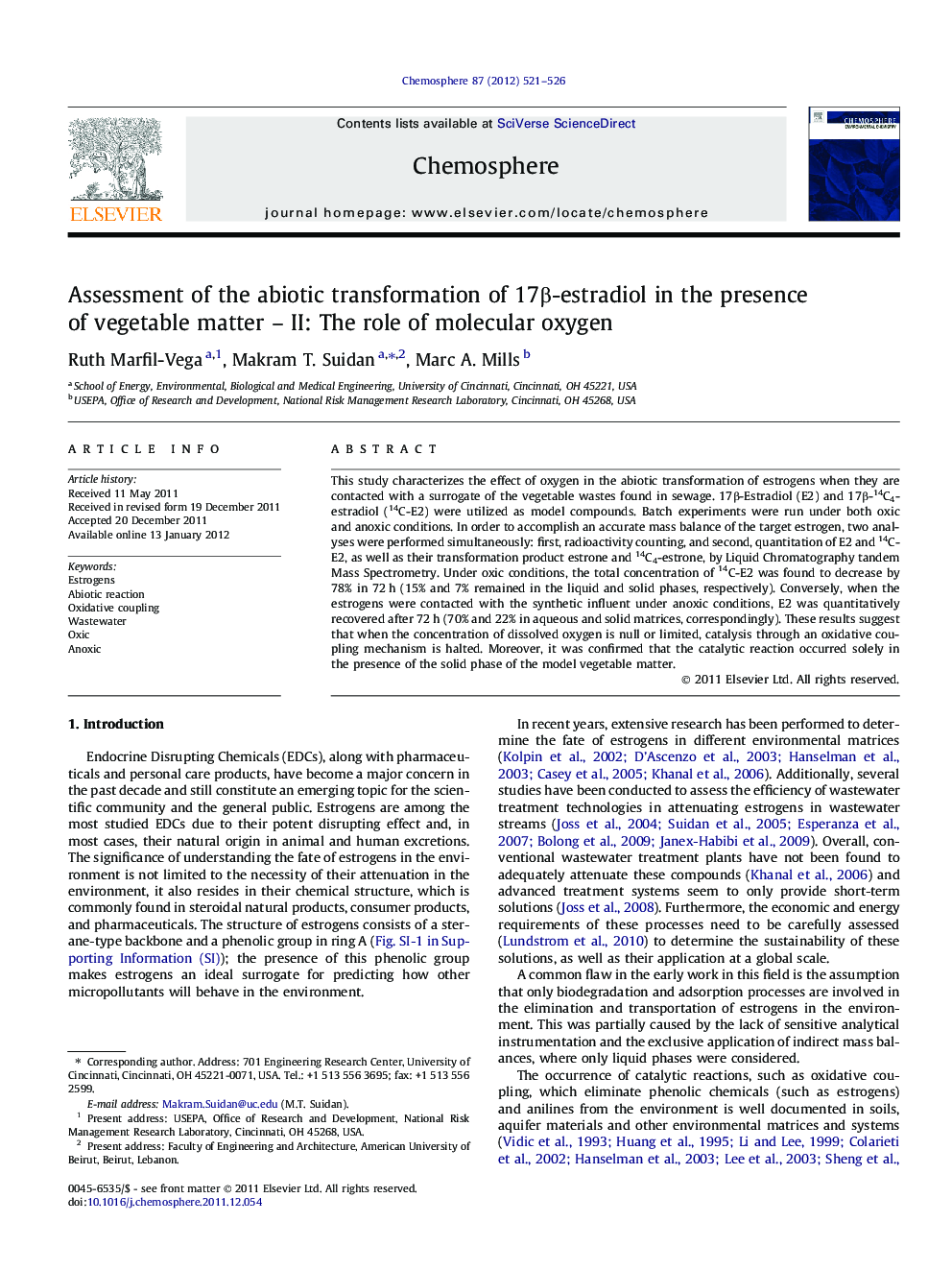| Article ID | Journal | Published Year | Pages | File Type |
|---|---|---|---|---|
| 4410222 | Chemosphere | 2012 | 6 Pages |
This study characterizes the effect of oxygen in the abiotic transformation of estrogens when they are contacted with a surrogate of the vegetable wastes found in sewage. 17β-Estradiol (E2) and 17β-14C4-estradiol (14C-E2) were utilized as model compounds. Batch experiments were run under both oxic and anoxic conditions. In order to accomplish an accurate mass balance of the target estrogen, two analyses were performed simultaneously: first, radioactivity counting, and second, quantitation of E2 and 14C-E2, as well as their transformation product estrone and 14C4-estrone, by Liquid Chromatography tandem Mass Spectrometry. Under oxic conditions, the total concentration of 14C-E2 was found to decrease by 78% in 72 h (15% and 7% remained in the liquid and solid phases, respectively). Conversely, when the estrogens were contacted with the synthetic influent under anoxic conditions, E2 was quantitatively recovered after 72 h (70% and 22% in aqueous and solid matrices, correspondingly). These results suggest that when the concentration of dissolved oxygen is null or limited, catalysis through an oxidative coupling mechanism is halted. Moreover, it was confirmed that the catalytic reaction occurred solely in the presence of the solid phase of the model vegetable matter.
► The role of molecular oxygen in the abiotic transformation of E2 in the presence of model vegetable material is studied. ► Anoxic conditions halted the transformation of E2 via oxidative coupling. ► Oxygen appeared to be the main oxidant in the reaction, and the participation of metals cannot be discarded. ► The presence of the solid material was proven essential for the reaction to occur.
